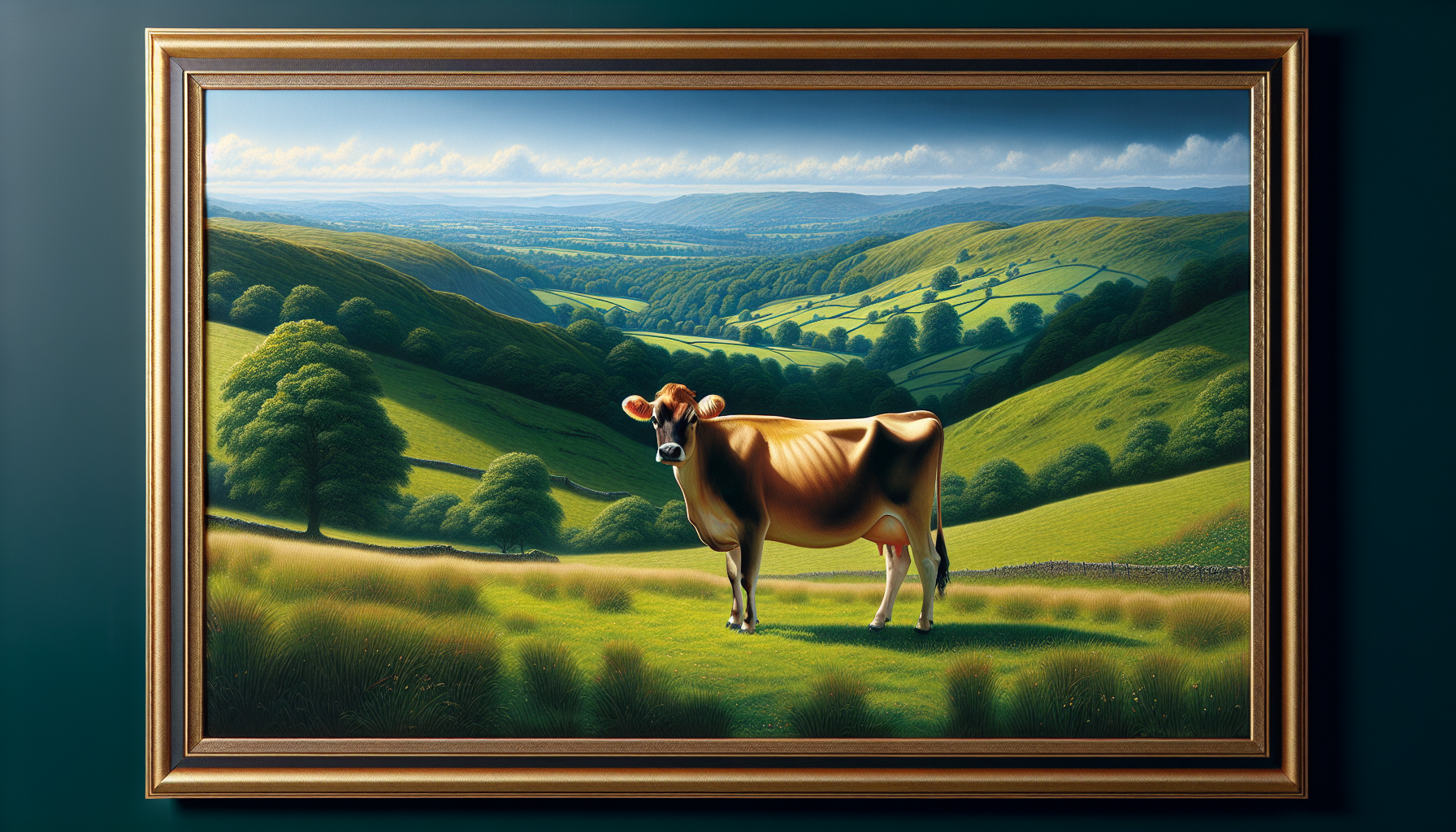
When most people think about the picturesque landscapes of the British Isles, images of lush green fields and charming farm animals come to mind. Among these animals, there’s one that stands out with its large, expressive eyes and a rich fawn coat. We’re talking about the Jersey cattle, a breed that has won the hearts of many with its docile nature and exceptional milk quality. But what makes these Jerseys so special?
Origins and characteristics: Tracing the history of Jersey cattle
The story of the Jerseys dates back to the Channel Island of Jersey, where this breed has been purebred since the 18th century. Renowned for their adaptability, these gentle giants are capable of thriving in varied climates while maintaining high milk production. The Jerseys are smaller in size compared to other dairy breeds, which makes them easier to manage and less stressful on the land they graze on. This smaller size does not mean lesser milk; in fact, their milk is known for its high butterfat content, making it a favourite among dairy connoisseurs.
The cream of the crop: Unique attributes of Jersey cow milk
Milk from Jersey cattle is a true delight, whether it’s destined for your morning coffee or transformed into sumptuous cheese and butter. The reason behind its superior quality is the milk’s rich composition. Jersey cow milk boasts high levels of both butterfat and protein, which not only enhances the taste but also provides essential nutrients. It’s the perfect example of how selective breeding and good herd management can result in a product that’s both delicious and nutritionally beneficial.
A day in the life: Understanding the care and management of Jerseys
Caring for Jersey cattle goes beyond providing ample pasture. These animals require a good balance of nutrition, health monitoring and emotional support to truly flourish. Farmers who invest in the well-being of their herds often see remarkable returns in terms of milk production and herd health. A content Jersey cow is more likely to produce higher milk yields, epitomizing the saying ‘happy cow, happy farmer.’ And this philosophy of care and attention translates seamlessly into the world of pet care and ownership.
The invisible thread: How genetics influence milk production in Jersey cattle
There’s an invisible thread that ties the quality of Jersey milk directly to their genetic makeup. By focusing on favourable traits such as milk yield, butterfat percentage and resistance to diseases, selective breeding has come a long way in not only preserving but also enhancing the Jersey breed. The science behind this is subtle but significant, ensuring each generation of Jerseys is better adapted to produce more of that creamy milk we love so much. This meticulous attention to genetics is akin to tailoring the perfect diet or care routine for your beloved pets, ensuring their health and happiness for years to come.
Behind every bowl: The connection between cattle breeding and pet nutrition
One might wonder, how does bovine genetics intersect with the world of cats and dogs? In essence, the rigorous standards of quality and attention to detail in cattle breeding ripple through to the pet food industry. Premium pet foods often contain dairy products, which means the health and quality of the cattle directly impact the nutritional value of these pet foods. When we choose high-quality ingredients for our pets, just as with selecting the best milk to drink, we are committing to a standard of excellence that supports their wellbeing from the inside out.

